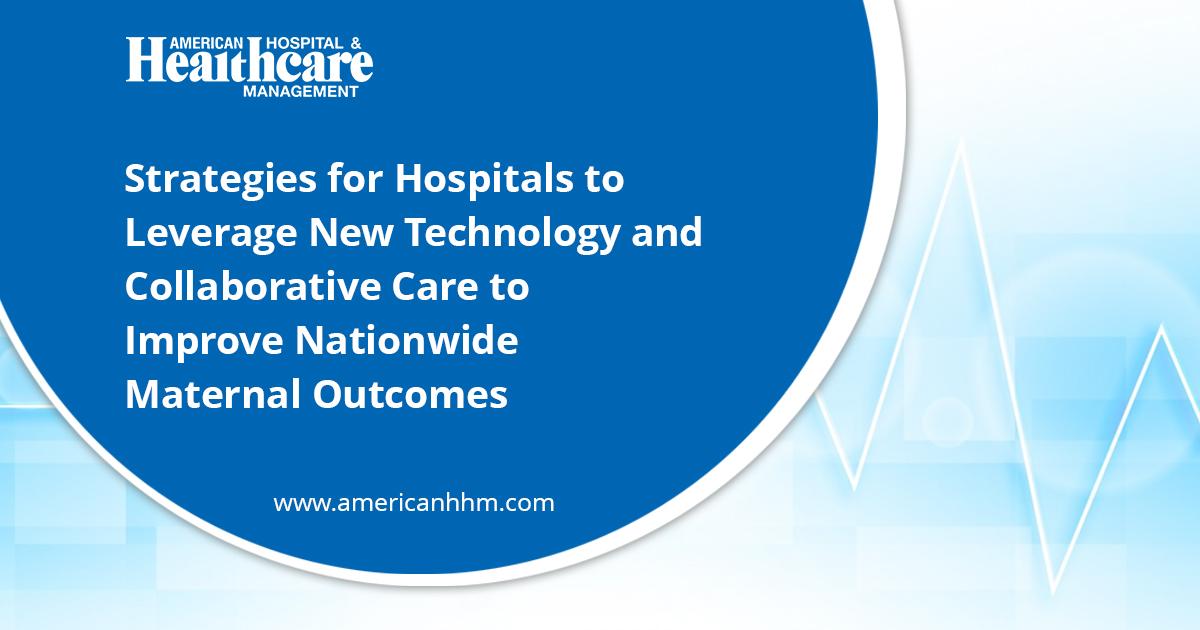Notifications

4 minutes, 7 seconds
-17 Views 0 Comments 0 Likes 0 Reviews

The United States is experiencing a maternal mortality and morbidity crisis, with access to maternity care remaining a critical challenge. Hospitals play a pivotal role in improving maternal and neonatal outcomes by providing comprehensive care and leveraging emerging technologies. Over two million women of reproductive age live in maternity care deserts, affecting one-third of U.S. counties. 1The shortage of obstetricians and maternal-fetal medicine (MFM) specialists, especially in rural areas, exacerbates this issue2. Hospitals must take a proactive approach by integrating technology, fostering interdisciplinary collaboration, and implementing protocols to reduce disparities3 and enhance maternal health outcomes. By adopting these strategies, hospitals can serve as the cornerstone for improving access, equity, and quality in maternal healthcare nationwide.
According to the CDC, the maternal mortality rate for 2021 was 32.9 deaths per 100,000 live births. This increases with age as well as specific race, ethnicity, and location. 4The lack of maternity care access disproportionately affects rural communities and marginalized populations. Many hospitals have shut down maternity wards due to financial constraints, including a lack of government funding along with limited insurance reimbursements, further limiting available resources. Women in these “deserts” often have to travel long distances to receive prenatal care, increasing the risk of complications. Furthermore, implicit bias within healthcare settings continues to contribute to racial disparities, with Black and Indigenous women experiencing significantly higher maternal mortality rates than their white counterparts.5
To combat these challenges, hospitals must embrace emerging technologies such as artificial intelligence (AI), telemedicine, and remote patient monitoring. AI-driven diagnostic tools can predict potential complications early, allowing for timely interventions. For example, hospitals should integrate AI into clinical decision support systems to help clinicians assess risks like preeclampsia, hemorrhage, or fetal distress more accurately and quickly. Additionally, simulation training for pregnancy-related emergencies can improve hospital readiness and response times in critical situations.6
Telemedicine expands access to maternal-fetal medicine specialists, mental health support, and general practitioners and other specialists, ensuring that pregnant women receive the necessary care regardless of their location. Nurses and pharmacists can remotely monitor heart rates, blood pressure, glucose levels, and other vital signs, then quickly alert the physician when necessary, preventing delayed care.
To further optimize care, hospitals can work on improving current technology to optimize alerts, prevent alert fatigue, and ensure that healthcare providers are promptly notified about urgent issues without being overwhelmed by unnecessary information. Integrating electronic health records (EHR) can help improve transitions of care, ensuring that pregnant women who are referred between specialists or to different facilities receive continuous, coordinated care.
Numerous mobile applications now support the pregnancy journey, enabling women to track their symptoms, nutritional intake, fetal development, and mental health. These apps can share data with healthcare providers, reducing bias and improving equity in care. By leveraging these digital tools, clinicians can develop personalized care plans for patients that enhance maternal and fetal health outcomes.
Explore more: https://www.americanhhm.com/articles/strategies-for-hospitals-to-leverage-new-technology-and-collaborative-care

